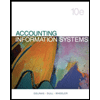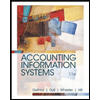Percentages need to be entered in decimal format, for instance 3% would be entered as .03. West Coast Chemical Company (WCCC) is considering two mutually exclusive investments - Project A and Project B. The projects' expected net cash flows for Years 0-5 are shown in the spreadsheet provided. Based on the information in the spreadsheet, what is the NPV for Project A and Project B based on the required return of 10%? What is each project's IRR? If the required rate of return for each project is 13%, which project should West Coast select? If the required rate of return is 9%, what would be the proper choice? If the required rate of return is 15%, what would be the proper choice? For each scenario, explain why you chose the particular project. Refer to the Model-Generated Data portion of the spreadsheet and identify at what rate the NPV profiles for the two projects cross. The spreadsheet shows that Project A has a large cash flow in Year 5 associated with ending the project. WCCC's management is confident of Project A's cash flows in Years 0 to 4, but is uncertain about what its Year 5 cash flow will be. There is no uncertainty about Project B's cash flows. Under a worst-case scenario, Project A's Year 5 cash flow will be $40,000. Assuming a 13% required rate of return, what are the NPV profiles for Projects A and B? What are each project's IRR? Which project should be selected? Why? Based on the information provided in Question 4, the best-case scenario estimates Project A's cash flow will be $50,000. Assuming the same 13% required rate of return, what are the NPV profiles for Projects A and B? What are each project's IRR? Which project should be selected? Why?
Percentages need to be entered in decimal format, for instance 3% would be entered as .03. West Coast Chemical Company (WCCC) is considering two mutually exclusive investments - Project A and Project B. The projects' expected net cash flows for Years 0-5 are shown in the spreadsheet provided. Based on the information in the spreadsheet, what is the NPV for Project A and Project B based on the required return of 10%? What is each project's IRR? If the required rate of return for each project is 13%, which project should West Coast select? If the required rate of return is 9%, what would be the proper choice? If the required rate of return is 15%, what would be the proper choice? For each scenario, explain why you chose the particular project. Refer to the Model-Generated Data portion of the spreadsheet and identify at what rate the NPV profiles for the two projects cross. The spreadsheet shows that Project A has a large cash flow in Year 5 associated with ending the project. WCCC's management is confident of Project A's cash flows in Years 0 to 4, but is uncertain about what its Year 5 cash flow will be. There is no uncertainty about Project B's cash flows. Under a worst-case scenario, Project A's Year 5 cash flow will be $40,000. Assuming a 13% required rate of return, what are the NPV profiles for Projects A and B? What are each project's IRR? Which project should be selected? Why? Based on the information provided in Question 4, the best-case scenario estimates Project A's cash flow will be $50,000. Assuming the same 13% required rate of return, what are the NPV profiles for Projects A and B? What are each project's IRR? Which project should be selected? Why?
Accounting Information Systems
10th Edition
ISBN:9781337619202
Author:Hall, James A.
Publisher:Hall, James A.
Chapter5: The Expenditure Cycle Part I: Purchases And Cash Disbursements Procedures
Section: Chapter Questions
Problem 3P
Related questions
Question
Percentages need to be entered in decimal format, for instance 3% would be entered as .03.
West Coast Chemical Company (WCCC) is considering two mutually exclusive investments - Project A and Project B. The projects' expected net cash flows for Years 0-5 are shown in the spreadsheet provided.
- Based on the information in the spreadsheet, what is the
NPV for Project A and Project B based on the required return of 10%? What is each project'sIRR ? - If the required
rate of return for each project is 13%, which project should West Coast select? If the required rate of return is 9%, what would be the proper choice? If the required rate of return is 15%, what would be the proper choice? For each scenario, explain why you chose the particular project. - Refer to the Model-Generated Data portion of the spreadsheet and identify at what rate the NPV profiles for the two projects cross.
- The spreadsheet shows that Project A has a large cash flow in Year 5 associated with ending the project. WCCC's management is confident of Project A's cash flows in Years 0 to 4, but is uncertain about what its Year 5 cash flow will be. There is no uncertainty about Project B's cash flows. Under a worst-case scenario, Project A's Year 5 cash flow will be $40,000. Assuming a 13% required rate of return, what are the NPV profiles for Projects A and B? What are each project's IRR? Which project should be selected? Why?
- Based on the information provided in Question 4, the best-case scenario estimates Project A's cash flow will be $50,000. Assuming the same 13% required rate of return, what are the NPV profiles for Projects A and B? What are each project's IRR? Which project should be selected? Why?

Transcribed Image Text:CO9
GRAPH
INSTRUCTIONS
60,000
40,000
Project B
20,000 -
Prject A
0% 2% 4%6% 8% 10% 12% 14% 16% 18%20% 22% 24% 26%28% 30%
-20,000
-40,000

Transcribed Image Text:CO9
GRAPH
INSTRUCTIONS
Chapter 9 Spreadsheet-Related Problem (c09)
NPV and IRR Analysis
1. There are a number of instructions with which you should be familiar
to use these computerized models. These instructions appear in a
separate worksheet labeled INSTRUCTIONS. If you have not already
done so, you should read these instructions now. To read these
instructions, click on theworksheet labeled INSTRUCTIONS.
2. The IRR formula requires that an initial "guess" value be entered.
We have chosen 10 percent which works in most cases and does give
the correct IRR for most capital budgeting problems encountered.
However in some cases, the cash flow pattern may be such that Excel
will not be able to solve for the IRR and the message "NA" will
be displayed instead of the IRR value.
3. A graph of the NPV profiles for each project can be displayed
if you click the worksheet labeled GRAPH at the bottom of this
spreadsheet. To return to this worksheet, click on the worksheet
labeled C09 at the bottom of the GRAPH worksheet.
INPUT DATA:
KEY OUTPUT:
Expected Cash Flows
Proj. A
(45,000)
(20,000)
11,000
20,000
30,000
45,000
Proj. B
(50,000)
15,000
Proj. B
Proj. A
9,367
Year
NPV
6,862
1
IRR
14.28%
15.24%
2
15,000
15,000
15,000
15,000
3
Crossover rate
12.81%
4
Required return
10.00%
MODEL-GENERATED DATA:
NPV profile:
Proj. A
NPV
Proj. B
NPV
0.00%
41,000
25,000
3.00%
29,726
20,104
11,853
4,747
-1,398
-5,036
-9,902
18,696
13,185
6.00%
9.00%
8,345
12.00%
4,072
15.00%
282
17.00%
-2,010
-5,141
20.00%
IRR
14.28%
15.24%
Crossover rate calculation:
Difference
Expected Cash Flows
Proj. A
(45,000)
(20,000)
11,000
20,000
Proj. B
(50,000)
15,000
in CFs
5,000
-35,000
-4,000
Year
1
2
15,000
3
15,000
5,000
30,000
15,000
15,000
45,000
15,000
30,000
Crossover rate = IRR of diff. CF
12.81%
Data for NPV profile graph:
Required
Return
Proj. A
Proj. B
NPV
NPV
10.00% 9367.250126 6861.801541
0%
41,000
25,000
2%
33,285
20,702
16,777
13,185
9,891
6,862
4,072
1,496
4%
26,350
6%
20,104
14,466
8%
10%
12%
9,367
4,747
14%
554
-3,260
-6,733
16%
-886
18%
-3,092
-5,141
-7,045
-8,819
-10,474
-12,020
-13,466
20%
-9,902
22%
-12,797
-15,446
-17,874
-20,102
-22,149
24%
26%
28%
30%
Expert Solution
This question has been solved!
Explore an expertly crafted, step-by-step solution for a thorough understanding of key concepts.
This is a popular solution!
Trending now
This is a popular solution!
Step by step
Solved in 4 steps with 2 images

Knowledge Booster
Learn more about
Need a deep-dive on the concept behind this application? Look no further. Learn more about this topic, finance and related others by exploring similar questions and additional content below.Recommended textbooks for you

Accounting Information Systems
Accounting
ISBN:
9781337619202
Author:
Hall, James A.
Publisher:
Cengage Learning,

Pkg Acc Infor Systems MS VISIO CD
Finance
ISBN:
9781133935940
Author:
Ulric J. Gelinas
Publisher:
CENGAGE L

Accounting Information Systems
Finance
ISBN:
9781337552127
Author:
Ulric J. Gelinas, Richard B. Dull, Patrick Wheeler, Mary Callahan Hill
Publisher:
Cengage Learning

Accounting Information Systems
Accounting
ISBN:
9781337619202
Author:
Hall, James A.
Publisher:
Cengage Learning,

Pkg Acc Infor Systems MS VISIO CD
Finance
ISBN:
9781133935940
Author:
Ulric J. Gelinas
Publisher:
CENGAGE L

Accounting Information Systems
Finance
ISBN:
9781337552127
Author:
Ulric J. Gelinas, Richard B. Dull, Patrick Wheeler, Mary Callahan Hill
Publisher:
Cengage Learning